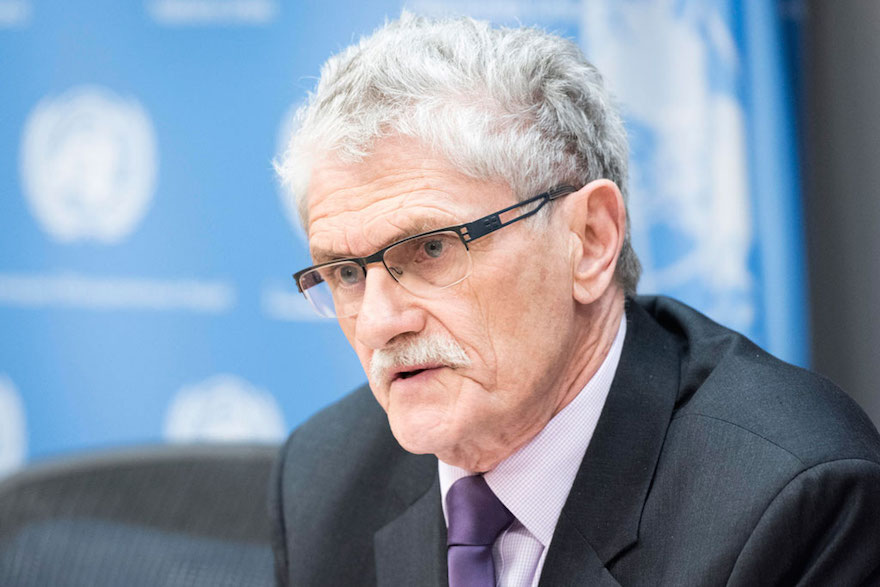BERLIN | NEW YORK (IDN) – Forthcoming April 12 and 14 promise to go down in the annals of history of the United Nations. For the first time, 193 member states of the UN and some selected sections of the general public will be given the opportunity of “an informal dialogue” with potential candidates for the prestigious post of the Secretary-General.
While this by itself is a historic development in the selection and appointment of the Secretary-General, the final decision on who will succeed Ban Ki-moon will lie with the five permanent members of the Security Council each of whom wields the power of veto: USA, Russia, China, Britain and France. Ban’s successor will be the person acceptable to all Five (P5).
The next Secretary-General will assume the role in January 2017. Traditionally, a UN chief has served a five-year term, which can be renewed by Member States. Only the late Boutros Boutros-Ghali was denied an extension because of U.S. objections.
On April 12 and 14 each candidate will be offered a two-hour meeting slot to present his or her candidature and UN member states will have the opportunity to ask questions and interact with each person.
Furthermore, each candidate will be asked to lay out his or her “vision . . . on challenges and opportunities that the United Nations and the next Secretary-General may encounter such as in the fields of peace and security, sustainable development, human rights, humanitarian response and issues pertaining to the management of the Organization”.
Time permitting, one or two representatives of the civil society will be given the floor. To top it all, meetings will be open and webcast with interpretation in all official languages and will follow “General Assembly seating protocol, a link to each webcast will be posted on the President’s webpage for future record”.
In a letter dated February 25, UN General Assembly President Mogens Lykketoft also informed all UN Member States of his intention to begin the meetings with all candidates who had been formally presented by April.
Until February 26, six candidates – all from Eastern Europe – had been officially presented: Srgian Kerim of the former Yugoslav Republic of Macedonia; Vesna Pusic of Croatia; Igor Luksic of Montenegro; Danilo Turk of Slovenia; Irina Bokova of Bulgaria; and Natalia Gherman of the Republic of Moldova.
“The informal dialogues or meetings will be as open and transparent as possible, with the considerable interest from the global public and civil society being duly kept in mind,” the letter states.
General Assembly President Lykketoft said at a press briefing on February 26 at Headquarters in New York: “I think this is quite historic and potentially game-changing for the way the Secretary-General is appointed.”
According to the UN Charter, the Secretary-General is appointed by the General Assembly following the recommendation of the Security Council. In as significant move, the General Assembly President, along with Security Council President Samantha Power, issued a letter to Member States on December 15, 2015 to begin soliciting candidates and to set in motion the selection and appointment process.
In the briefing on February 26, Lykketoft noted that each candidate will be asked to provide a short vision statement of up to 2,000 words in advance, which his office will circulate to Member States and the public.
Asked whether there were any regulations about regional rotations for the Secretary-General post, Lykketoft said there was no “hard and fast rule”. Of course, a group could argue in favour of regional rotations, he said, noting that of the five regional groups, the Central European group was the only one that had not yet been able to select a Secretary-General.
Another group might argue that this was an opportune occasion for selecting the first female Secretary-General, he added. But this view is not shared by all P5 Security Council members. Russia, for example has made it view clear on this issue stating that not gender but qualifications should be considered vital.
Answering a question about the vetting process in the Security Council, Lykketoft said he was unaware of what the final procedures would be in the Council, but he expected that each and every candidate would be presented in the General Assembly as part of the process he had outlined. He encouraged all Member States to bring candidates forward.
This, said a veteran observer of the UN, means that unlike in run-up to the appointment of Ban, potential candidates have to be endorsed by their respective governments.
“There is an opportunity for the membership to have much more influence than before,” Assembly President said, adding that it would be “difficult” to see the Security Council “coming up later with a different name” than the one/s favoured by the General Assembly.
Replying to a question whether he had met with any of the candidates, Lykketoft said that he had already met with all of the current candidates on different occasions, and that as late as the week ending February 26, he had met with three of the six.
In addition, answering a question on whether candidates would disclose the amount of money spent to support their candidacy in their campaigns, the General Assembly President stressed that it was not “within his competence” to write rules and regulations about such matters.
However, he encouraged reporters to raise such questions with the candidates themselves, and also expressed hope that the General Assembly and the Security Council would “find a balance” to get the best candidate elected. [IDN-InDepthNews – 29 February 2016]
IDN is flagship of the International Press Syndicate.
Photo: General Assembly President Mogens Lykketoft briefs journalists on the selection process for the next Secretary-General of the United Nations. UN Photo/Mark Garten

